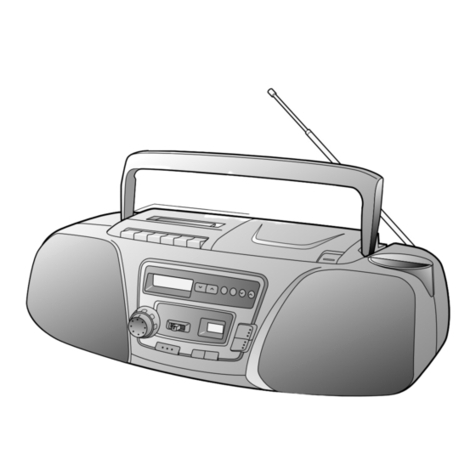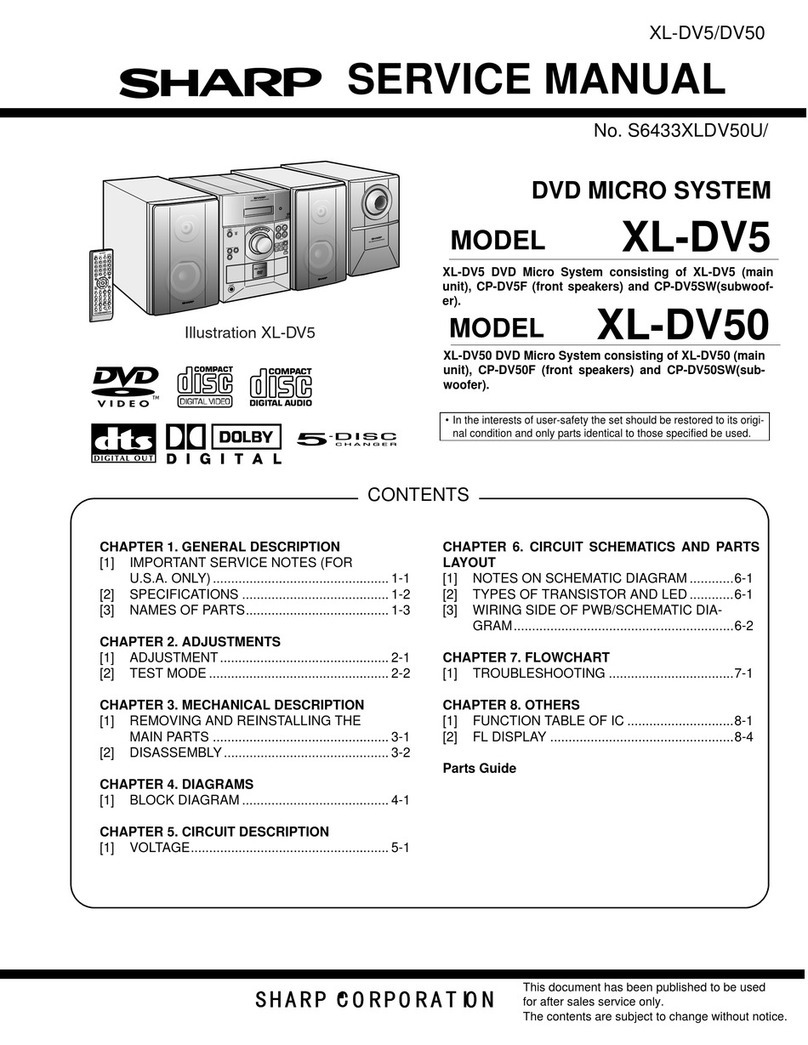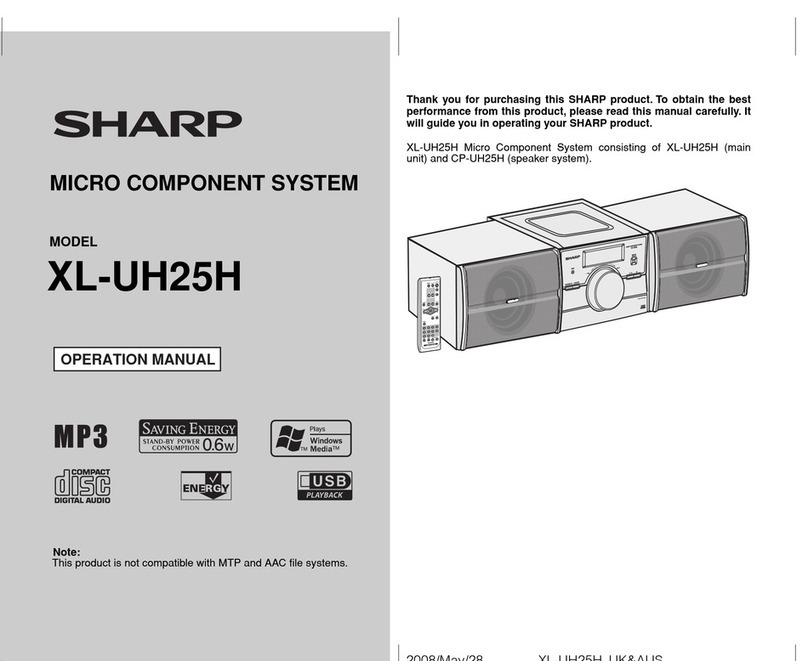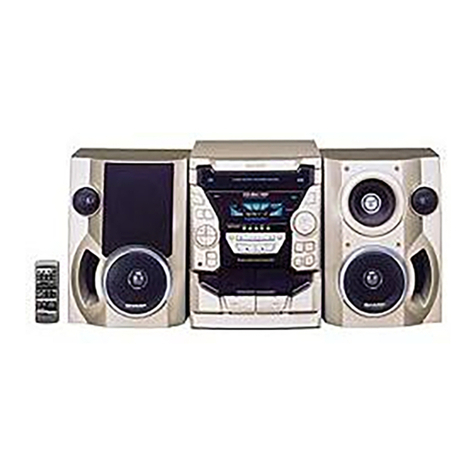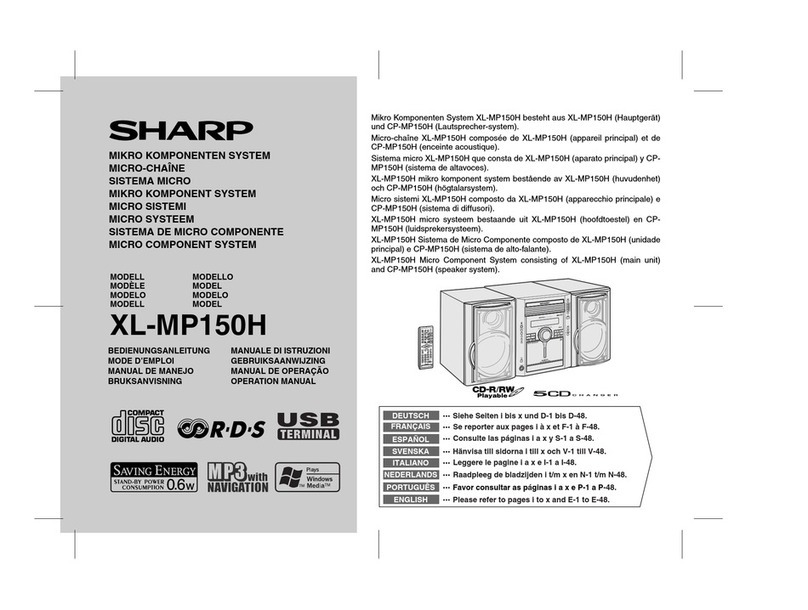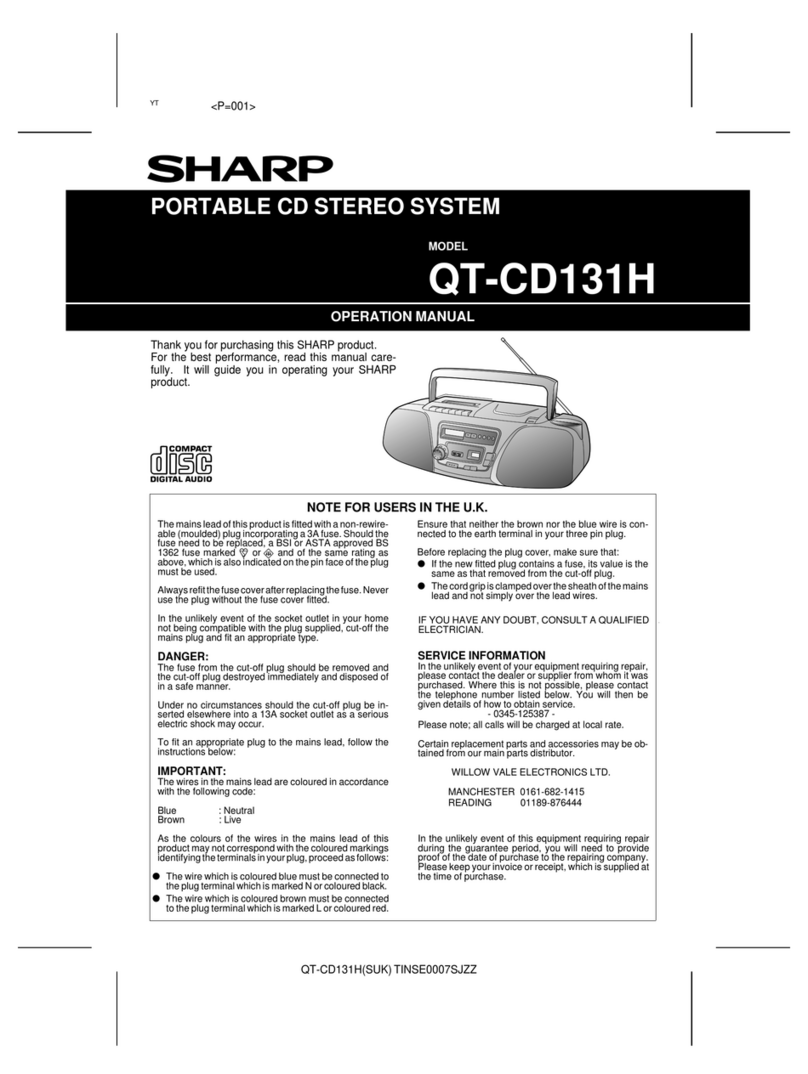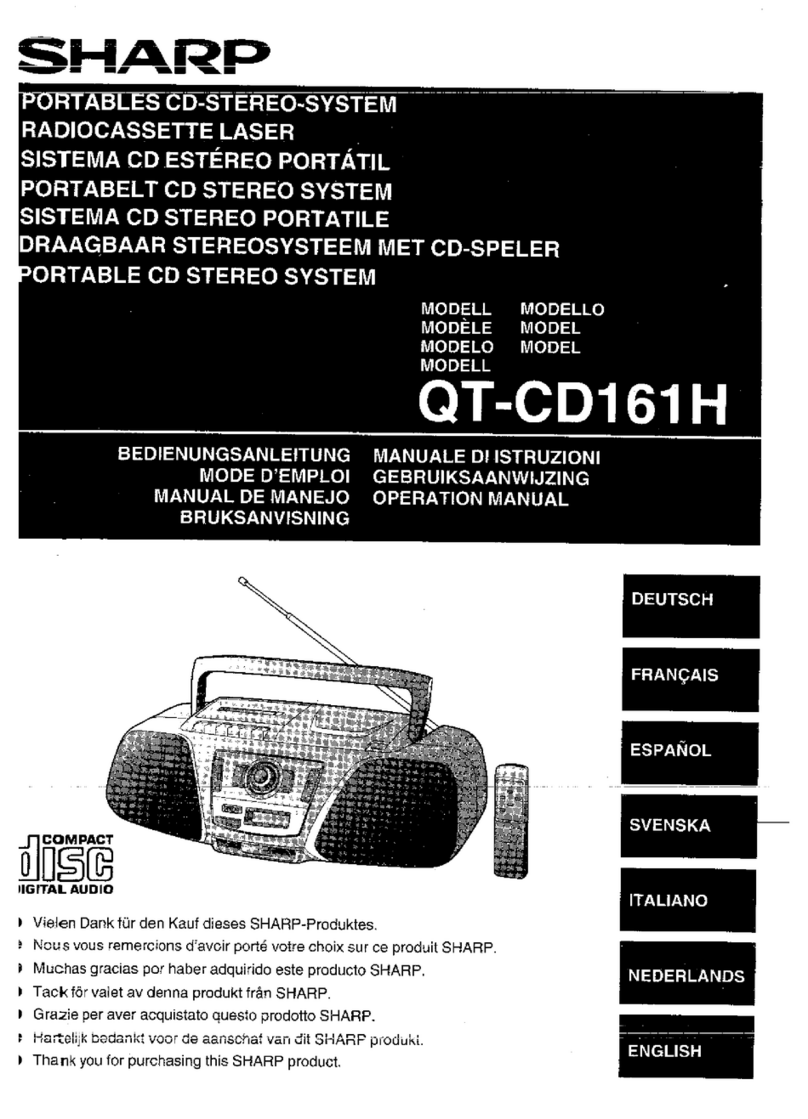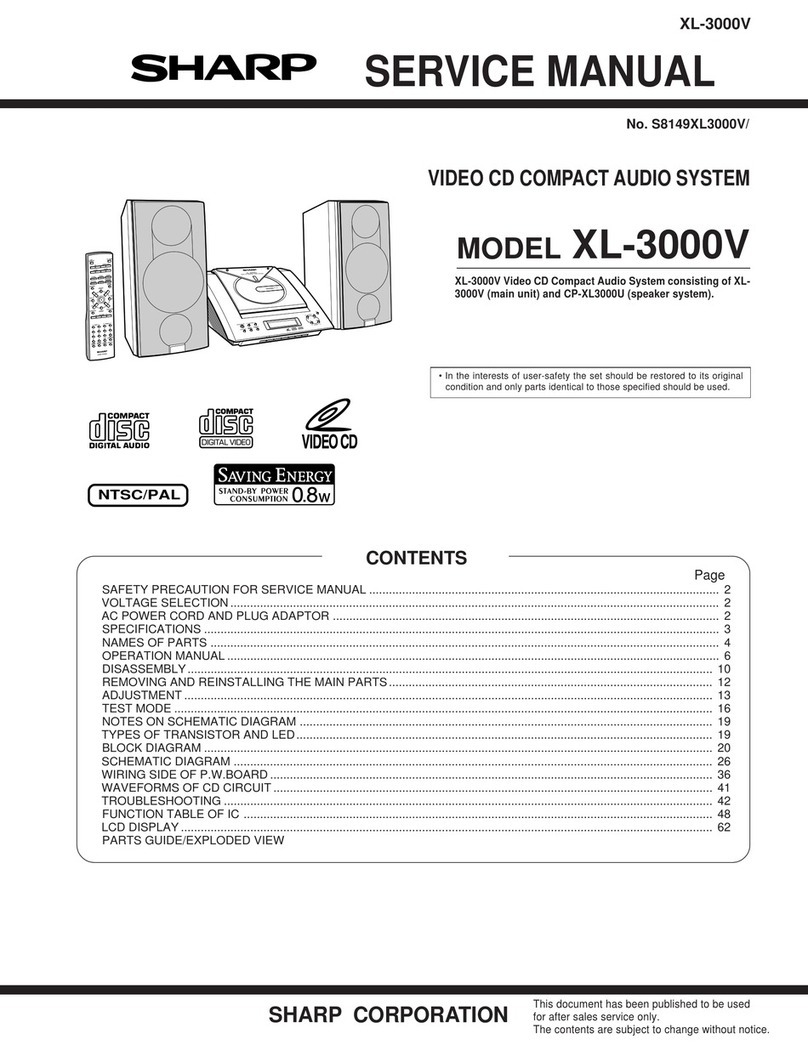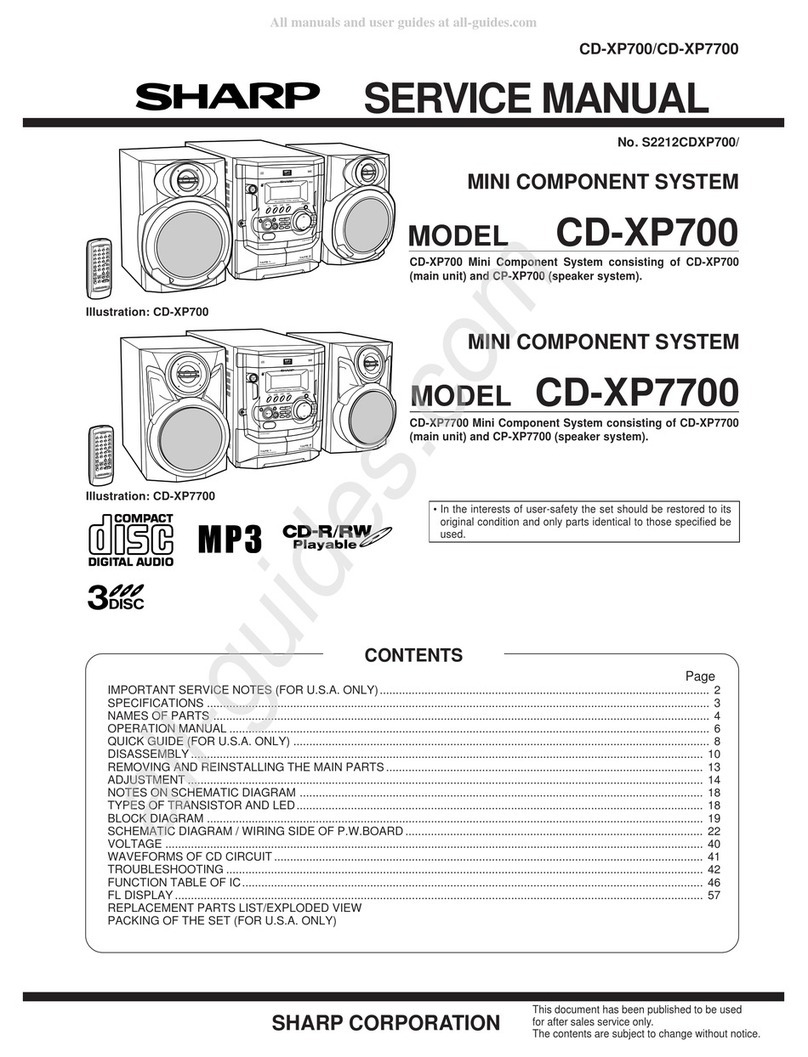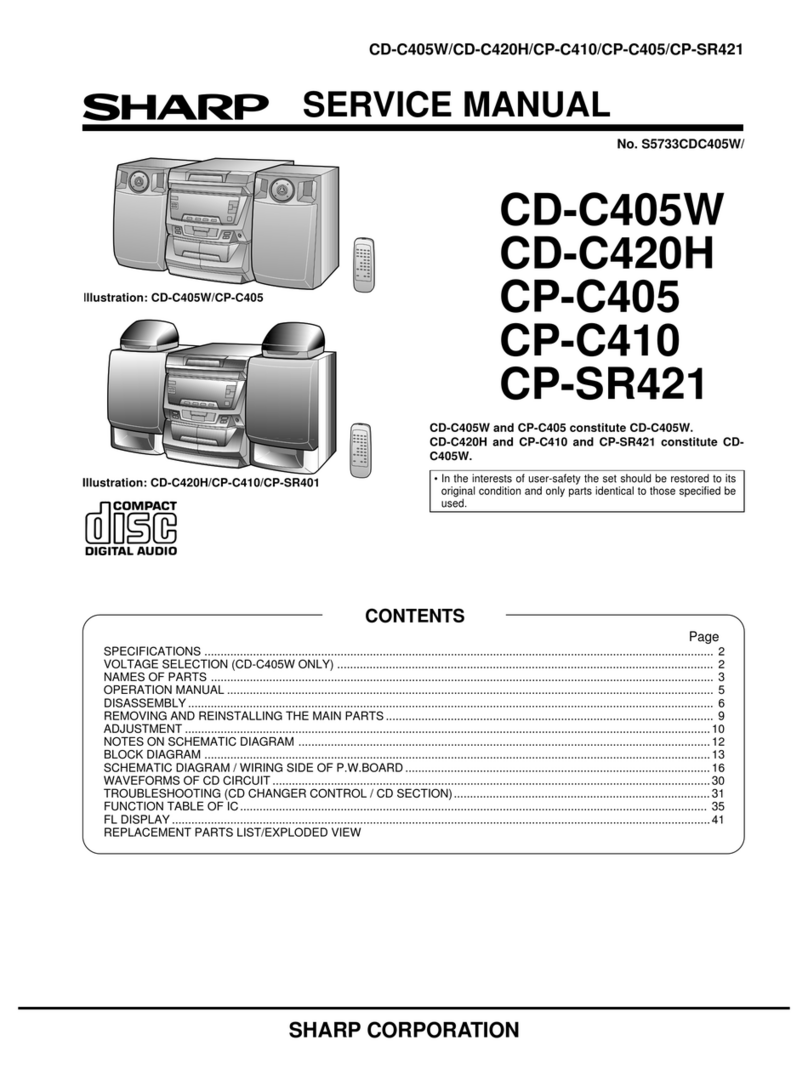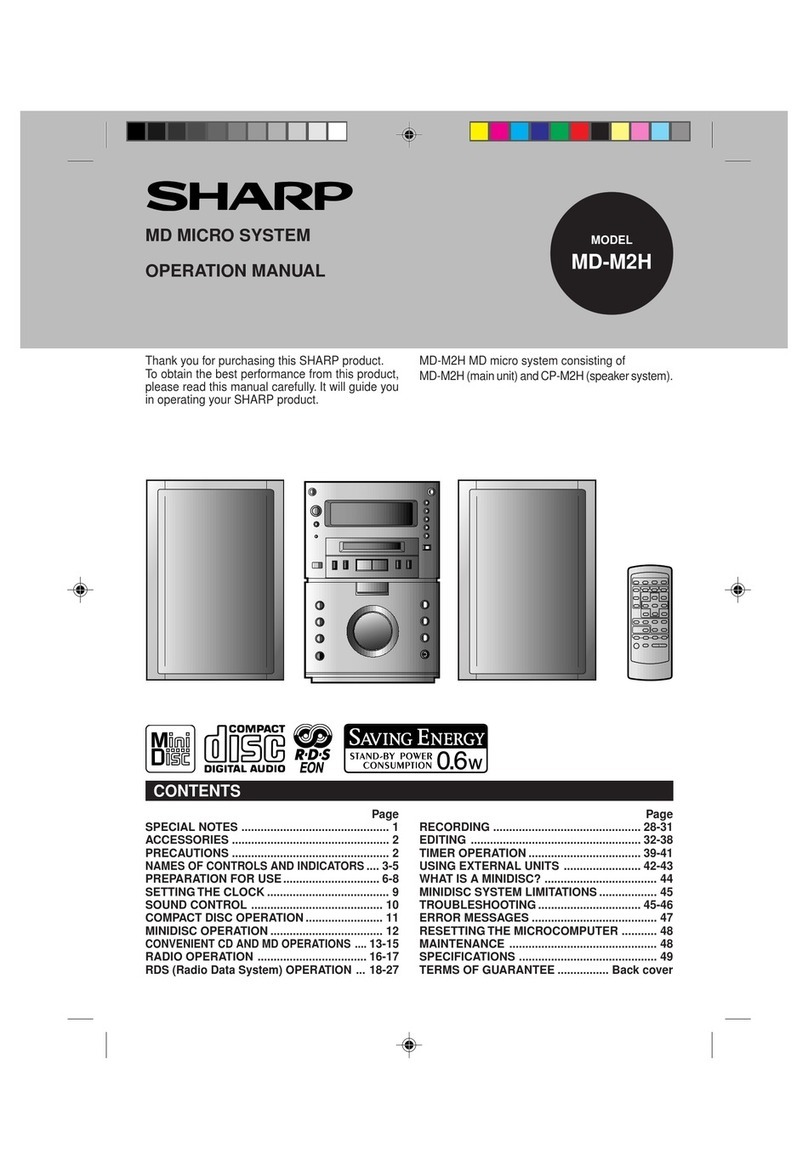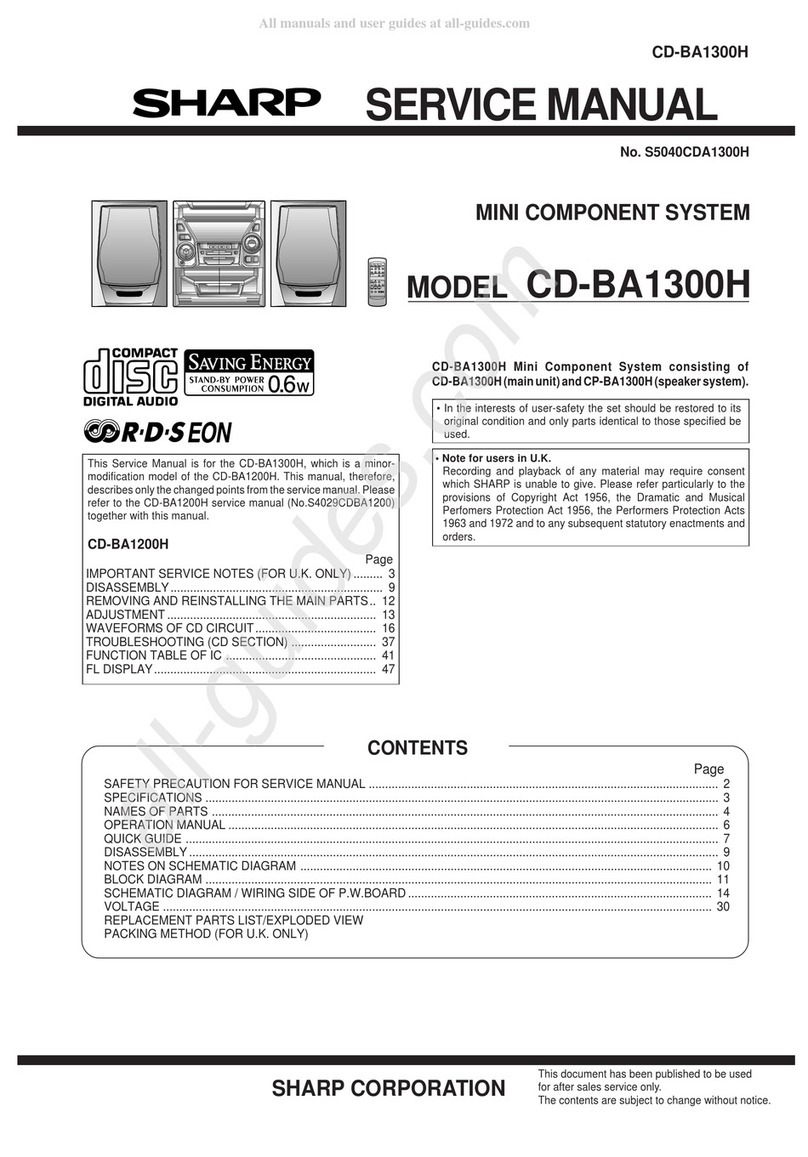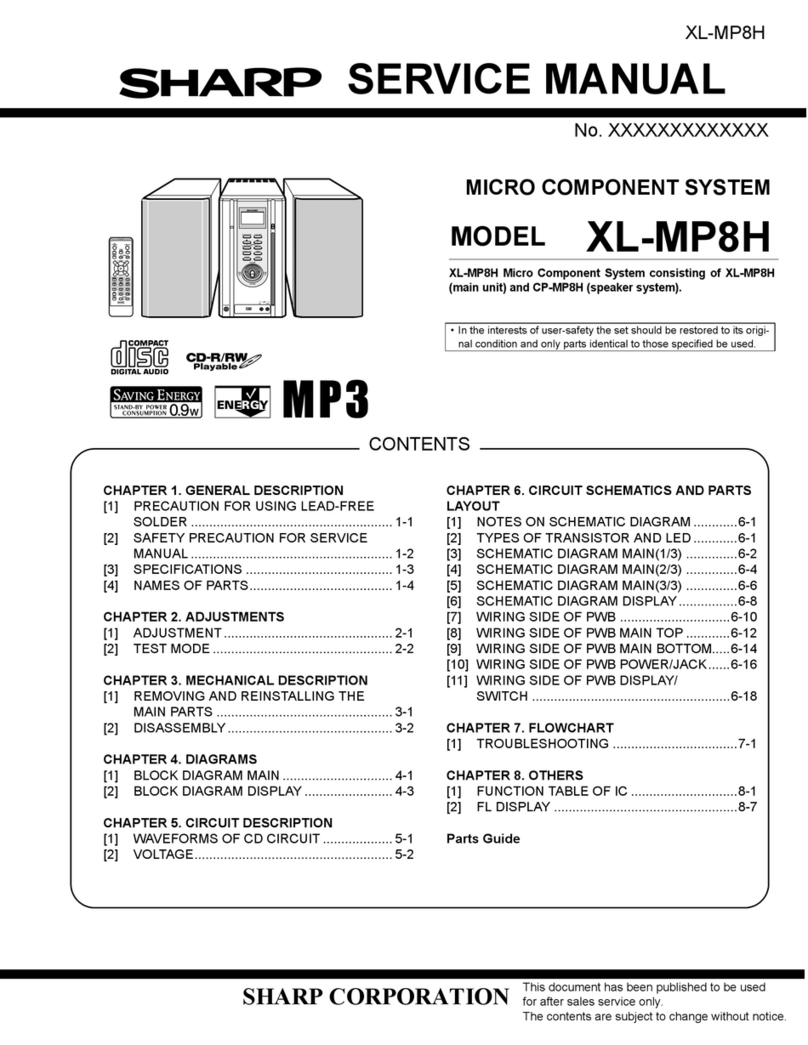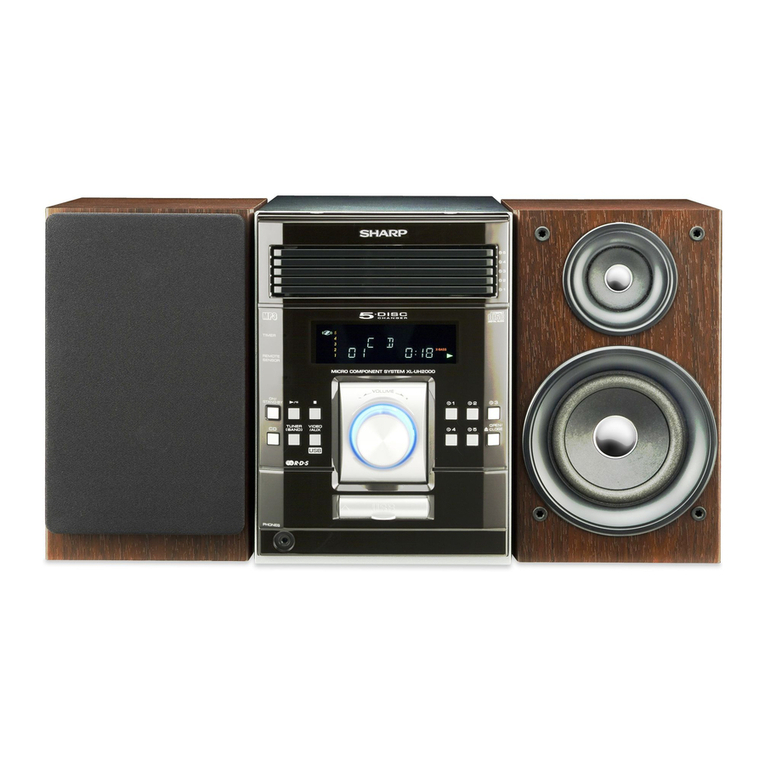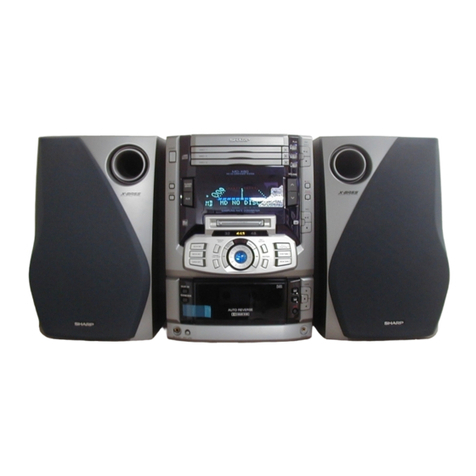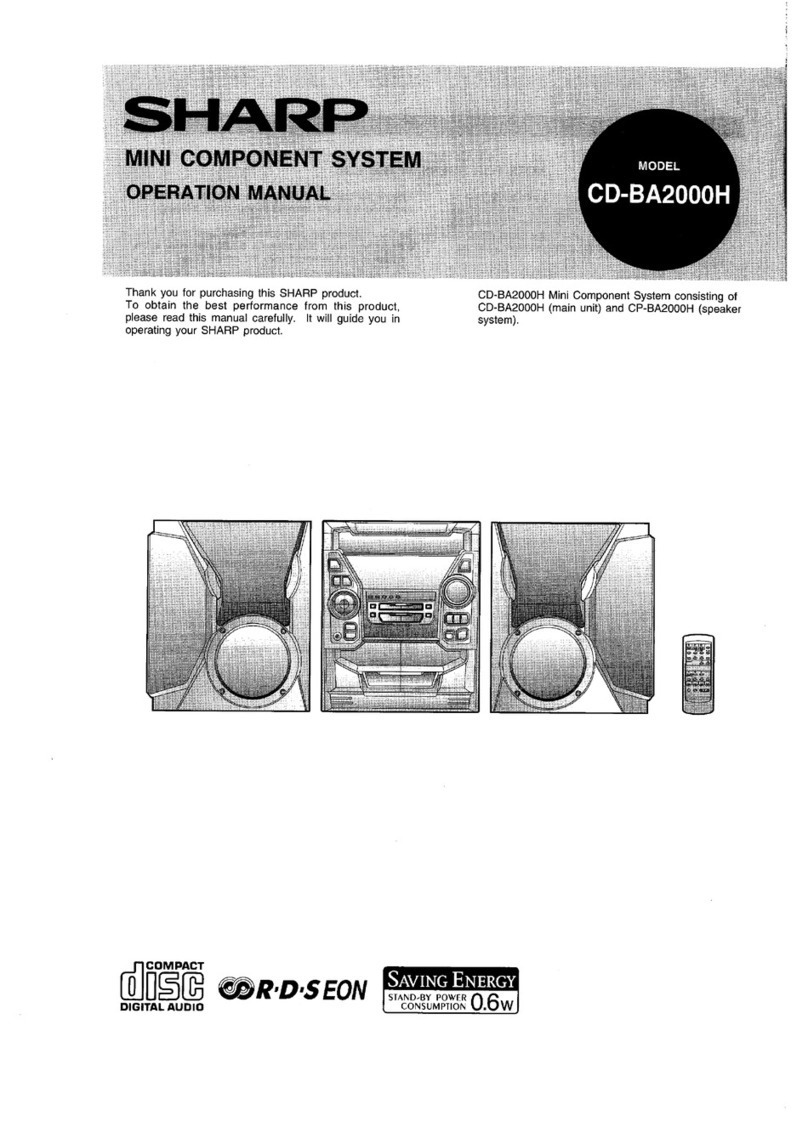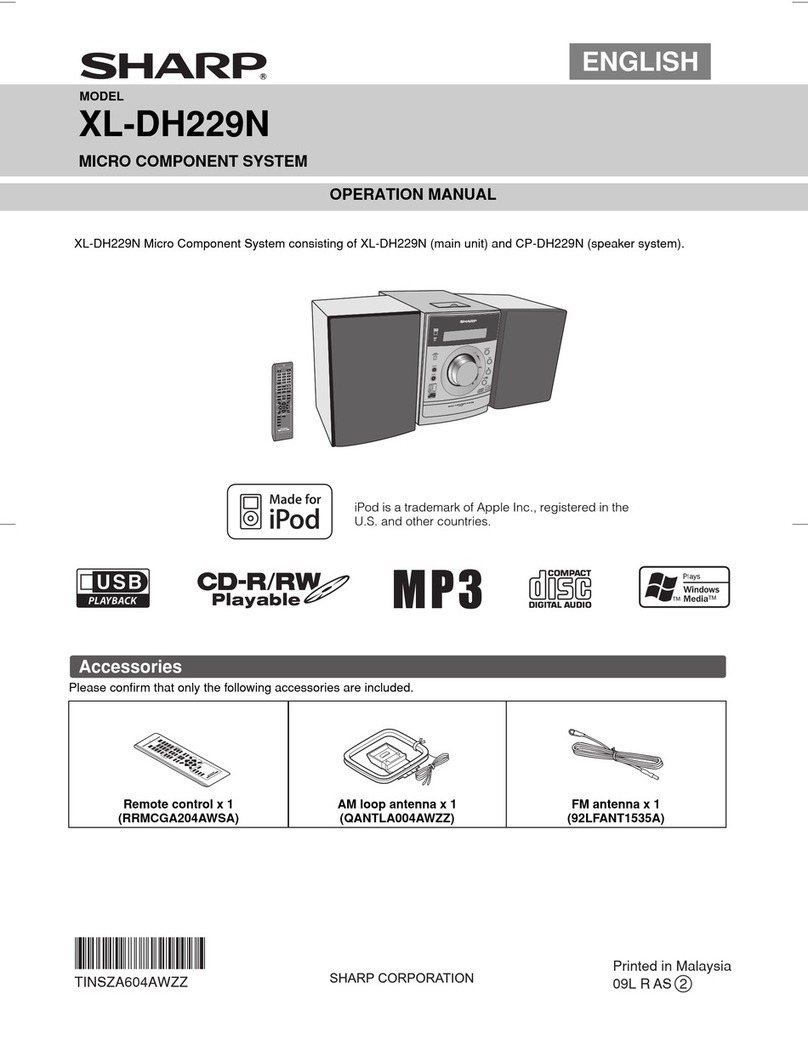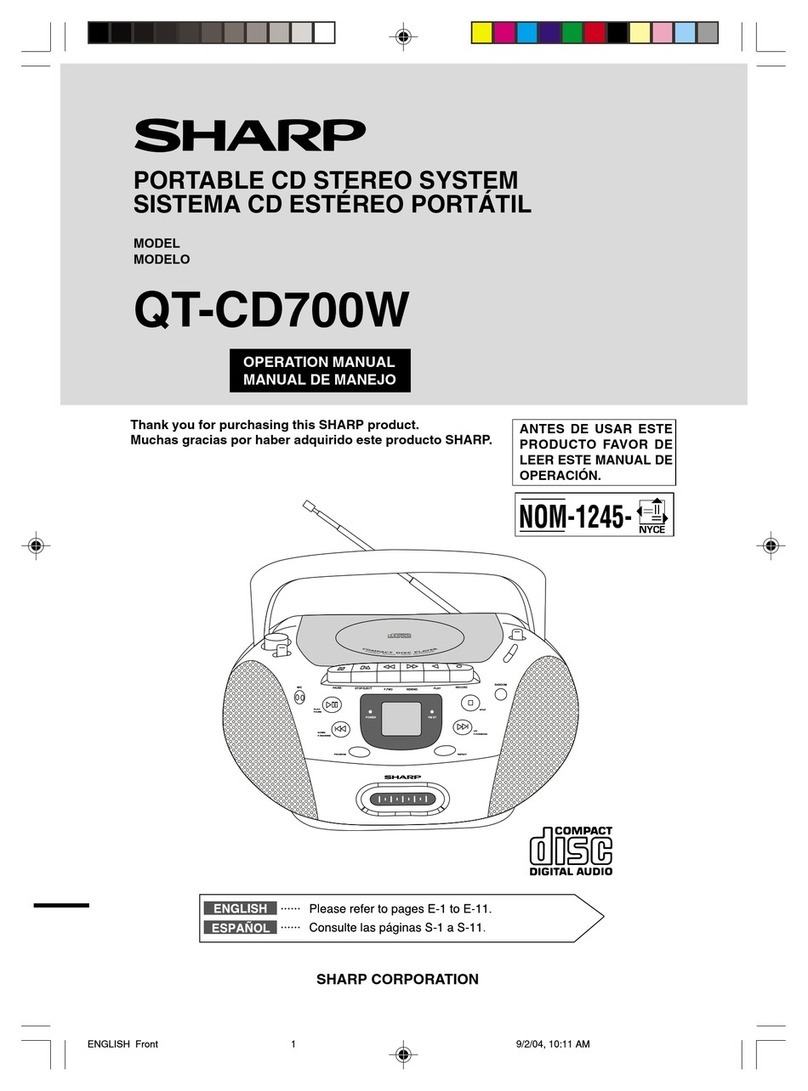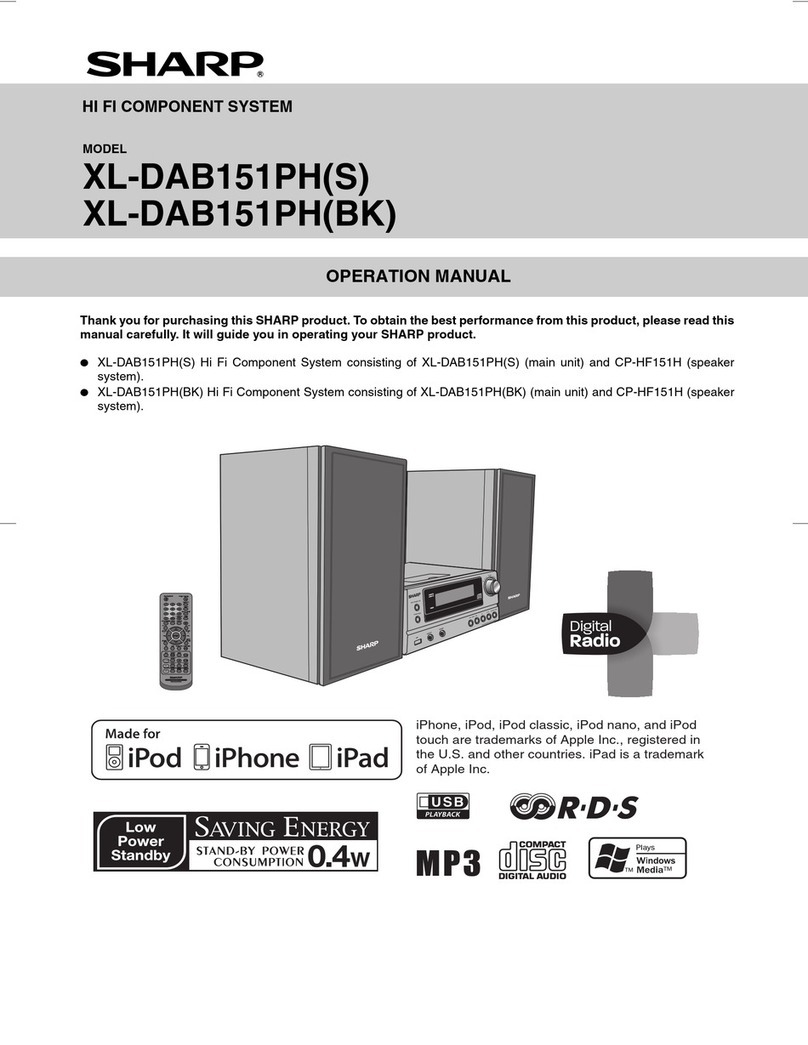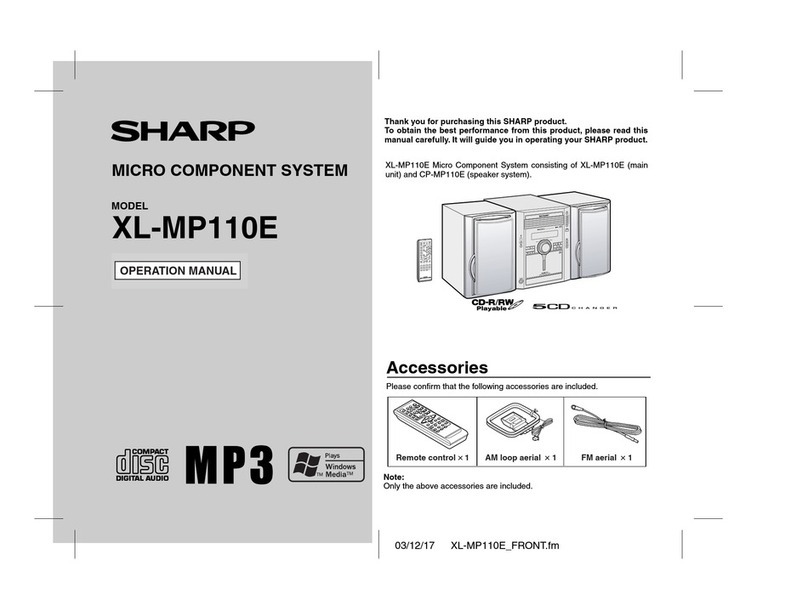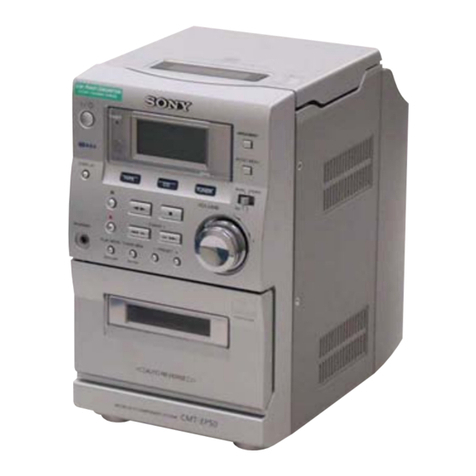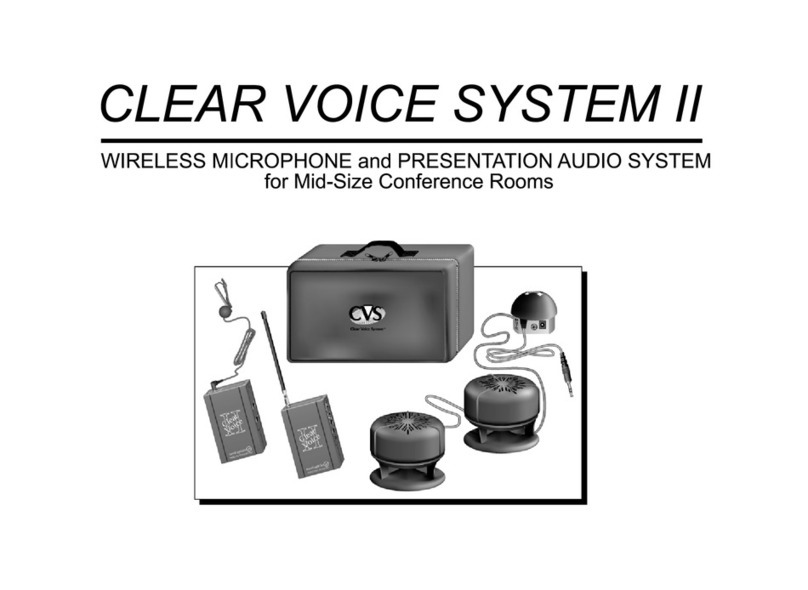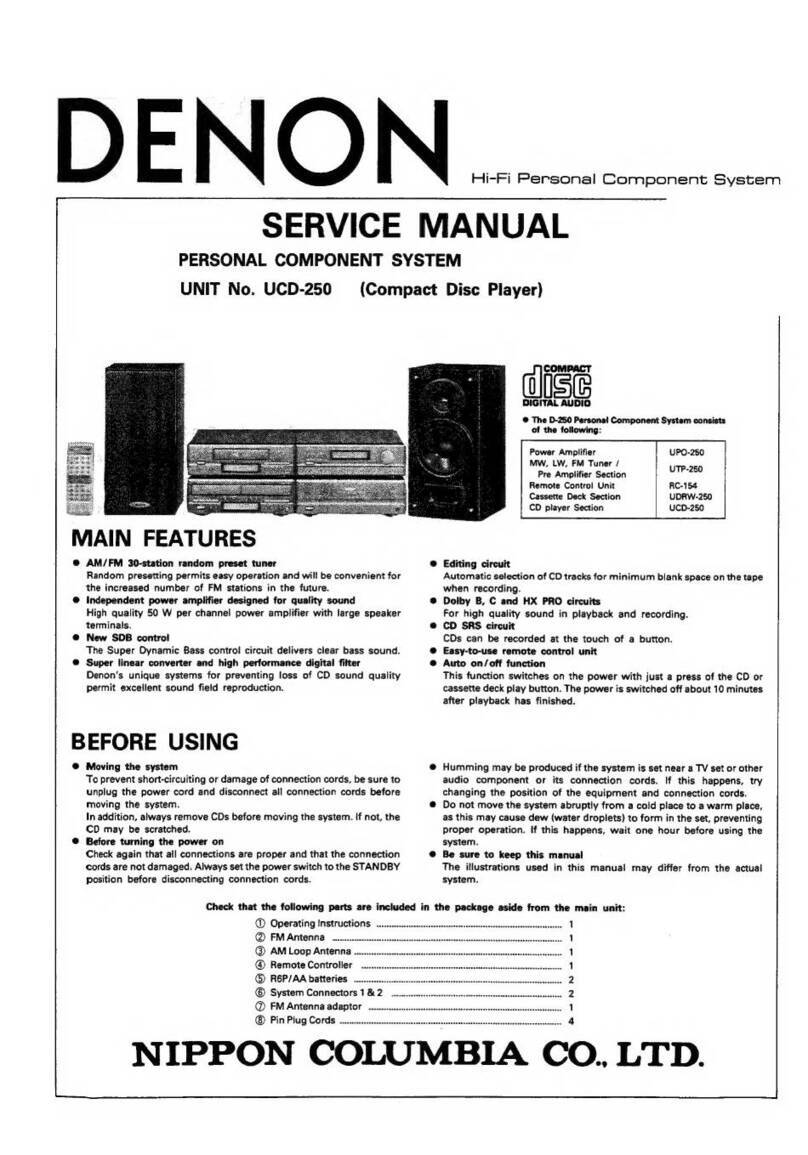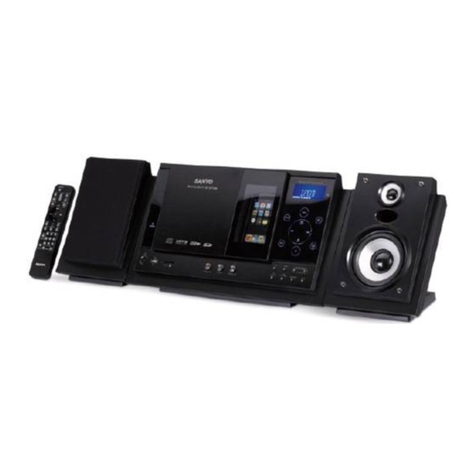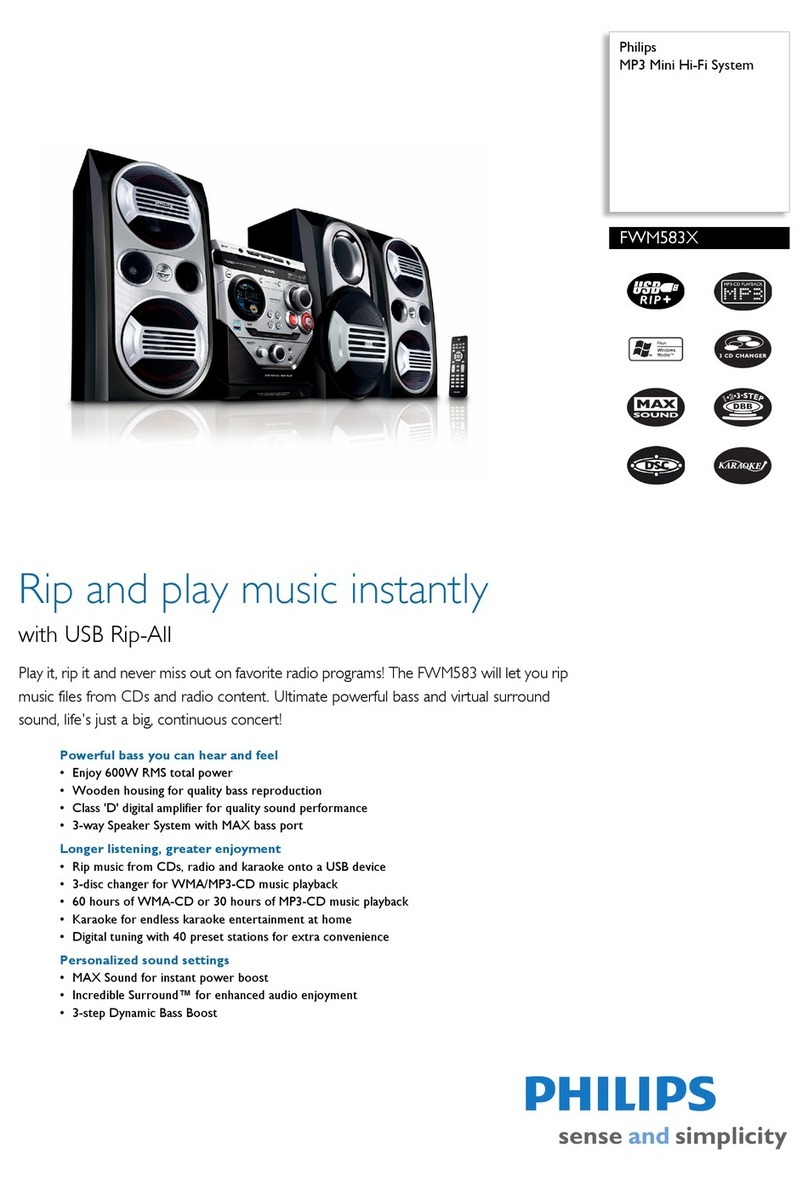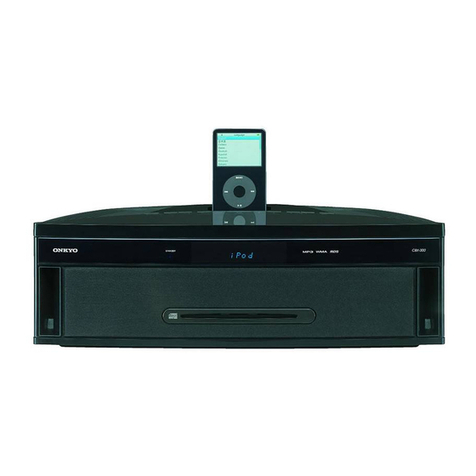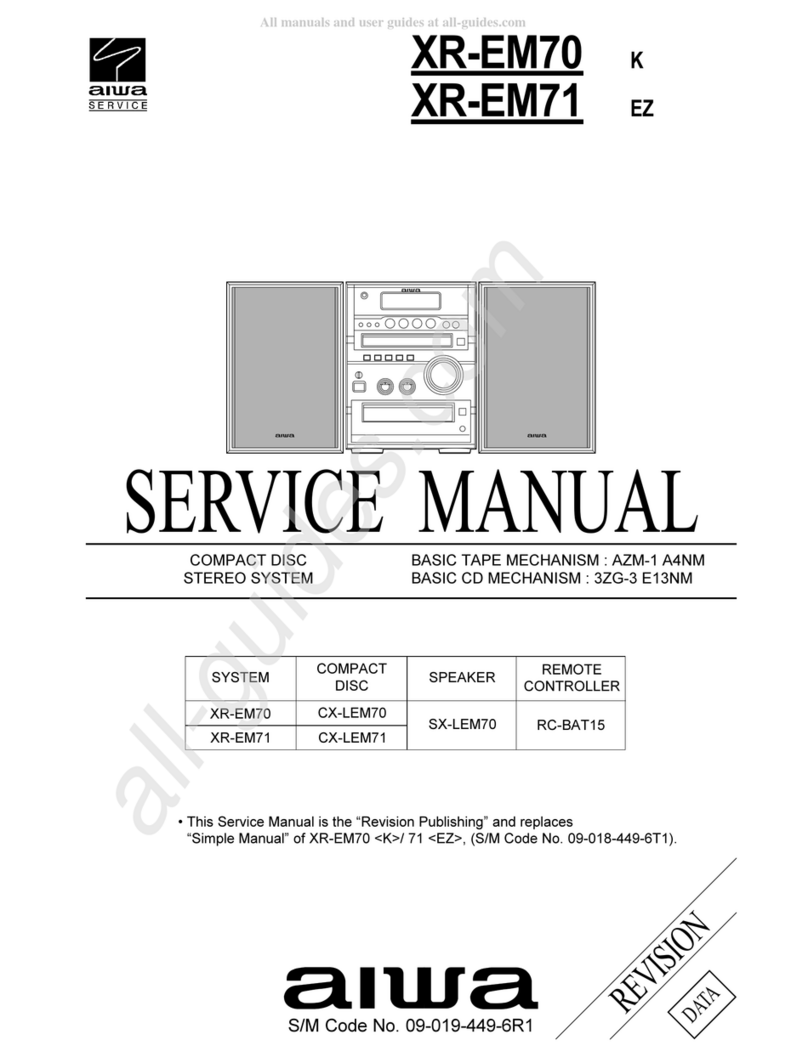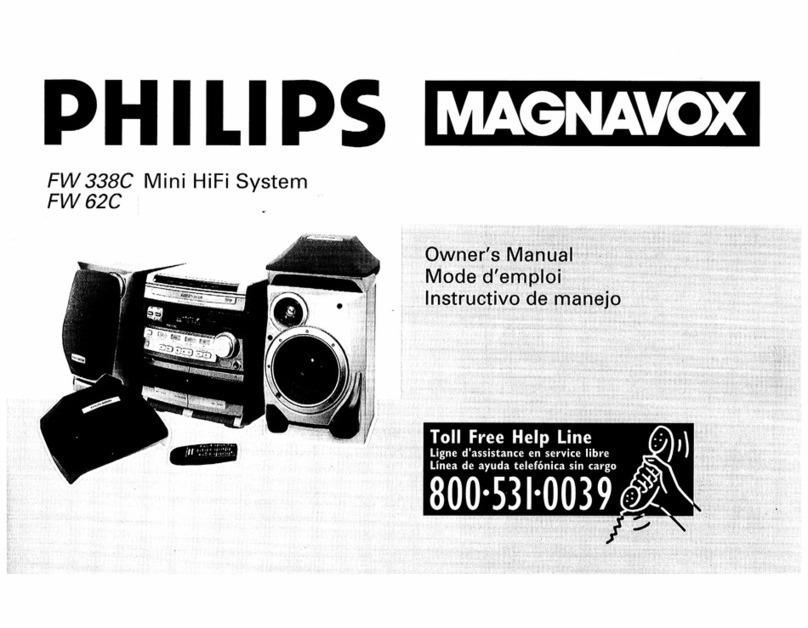The basic movement the CD changer is describedas follows.
See 2 and 3.
• TheCDchangerbasicallyconsistsofthetray (208)whichslides
on the CD chassis (224), and the maingear (238)to movethe
tray. As the main gear rotates, the projection (Zenbea
Pi.n)
on
the main gear causes rotation of the CD up/down cam (241),
resulting in up/down of the CD mechanism and CD chucking.
The maingear is driven by Loading Motor MTR1.
Onthe tray (208),the turntable (209)to load adisc andthe disc
select motor MTR2 to rotate the turntable are set up. MTR2
controls the turntable movements. MTR2 which rotates on the
traycanrotatethedisctableregardlessoftheopen/closemotion
of the tray.
•Thefollowingarethe electricpartswhichcontrolthe movements
to open/closethe tray and to rotatethe turntable.
Tray Driving Motor (Loading Motor) :
MTR1
Tray Open Switch to detect that the tray is completely
open:
SW1
Photo Sensor (Tray Close SW) to detect that the tray is
closed: PHi
Photo Sensor (Mecha UP SW)to detect that the CD mecha-
nism is UP : PH2
Turntable Driving Motor (Disk Select Motor) : MTR2
Photo Sensor (Disc Select SW) to detect the disc table
position: PH3
TheTable2belowshowsthe portsofthe microcomputer(IC801)
to decode signals and to drive with the use of the above parts.
Under the main gear to control the tray movements, a double
screenofconcentriccircleisplaced.Therelationofthe maingear
rotatingposition andthe tray positionis 1:1. Heightofthe screen
can be changed with the tray closed or at the maingear position
corresponding to the tray position where the CD mechanism is
movedup/down. As a result,the LEDlight of the photo sensors
PH1andPH2canbeshutorpassedtochangeoutputofPH1and
PH2 high and low.The tray movement is controlled by changing
this signal.
The signals PHi and PH2 change depending on the height of
peripheral screen, and the inner screen, respectively.When the
screen is placed low,the LED light is passedto makethe photo
transistor inside the sensor turn ON, resulting in low output
(approx.0.2V). Ontheotherhand,whenthescreenisplacedhigh,
the lightisshutto makethe phototransistorOFF,resultingin high
output (5V).
Summary:
MTR1
:Controls opening/closing of the tray and up/down of the
CD mechanism.
[MTR1
rotation(clockwise/counterclockwise)
~J
S' It
Rttl d' tl f th . irnu aneous
~
0a Ing irec Ion0e main gear
~
tf
~
Opening/closingof the tray
two
tvoes S 0
. wo ypes
~
Up/downof CD mechanism
MTR2 :Controlsthe turntable rotation.
The movementsofthe maingear andthetray, whichare
structurallycomplicated,willbeexplainedindependently
inthe other section.Thereafter,the turntable movement
will be described.
PORT .-UN\.,;
IIVN
OF MICROCOMPUTER NAME CIRCUIT DIAGRAM
•
Port for Macha UP SW(PH2)
ICaDi
44 pin MECHA
UPSW
Port for Tray Close SW(PH1) 47 pin
CLOSESW
Port for Tray Open SW(SW1) 48 pin
OPENSW
Port to drive MTR1 45 pin CLOSE MTR
46 pin OPEN MTR
Port to drive MTR2 42 pin
MTR+
41 pin
MTR-
Port for Disc Changer SW(PH3) 43 pin
DISCTBLSW
2
OPEN
}J.-COM
IC801
SW1
Tray close
photo sensor
Loading motor
(MTR1)
Discselect motor
(MTR2)
Disc changer
photosensor
-2-
2
